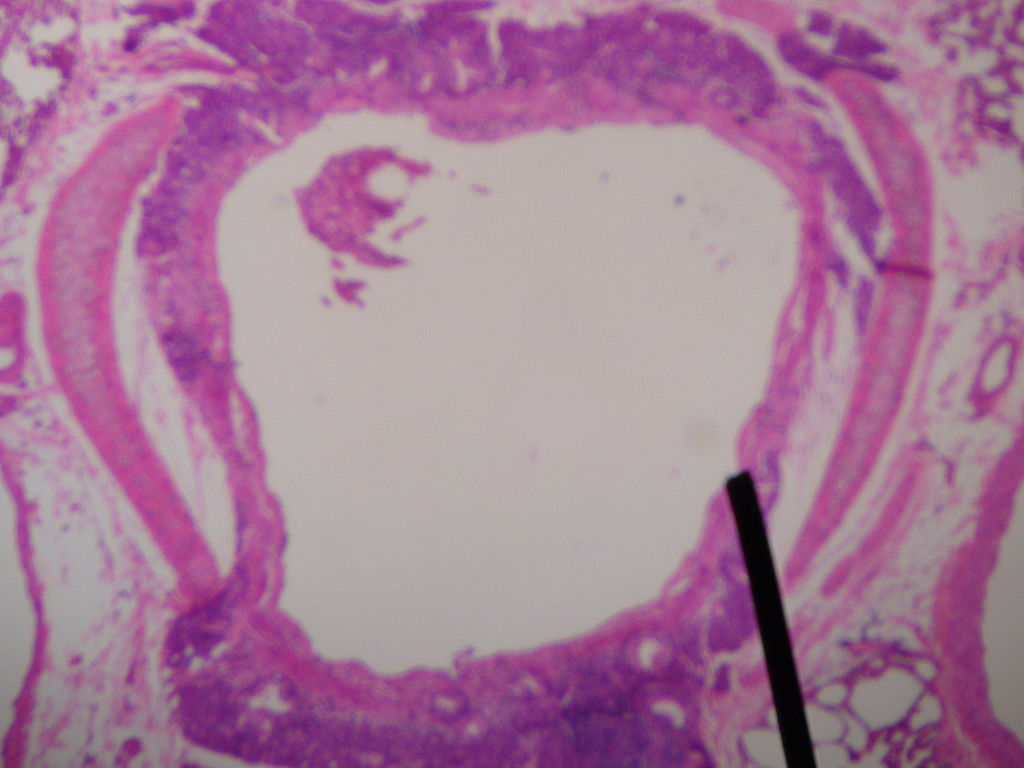Playlist
Show Playlist
Hide Playlist
Asthma: Introduction
-
Slides ObstructiveLungDisease Asthma RespiratoryPathology.pdf
-
Download Lecture Overview
00:02 Let's take a look at obstructive lung diseases and our first true pathology here, under obstructive, we'll take a look at asthma. 00:09 Keep in mind that much of this information in terms of its pathogenesis comes from immunology. 00:14 So our strict focus here is going to be our patient, how are they going to present, and then ultimately, tie this in with the other obstructive diseases in which often times may be confused with emphysema and chronic bronchitis. 00:29 Let's begin. 00:31 Asthma, inflammatory disease, small airway. 00:35 Inflammation to airway, that leads to what? Mucus production. Stop there. 00:39 I told you at some point in time that we will take a look at the definition here versus definition of chronic bronchitis. 00:46 Why do I bring chronic bronchitis into play? Because of mucous production. 00:50 Chronic bronchitis however, represents the fact that your patient is presenting with 3 months of continuous productive cough over a 2 year span. 01:03 Bronchospasm, leading to a reversible obstructive lung disease. 01:07 Well, it depends. 01:08 But for the most part, think of it as being reversible. 01:11 Why? Well, if you're able to relieve your patient of whatever exposure that the patient might be having resulting in the asthma type attack, maybe perhaps you are able to reverse it. 01:23 That's an important definition there. 01:26 Bronchodilators come to mind. 01:28 Usually and typically seen in young patients. 01:31 Many asthma patients usually end up having or have had exposure to allergen. 01:38 This puts you in the realm of something like atopic which is majority of your patients with asthma or they've had a viral, URI stands for upper respiratory tract infections. 01:51 Now all these can be exacerbated with having asthma. 01:54 Now, what's going on here actually? The airways of most patients with asthma, are normal at baseline. 02:01 During flares which are usually triggered by allergens. 02:03 Increased smooth muscle tone and narrowing of the airways are now problems for the patients. 02:08 Increased inflammation and edema cause further narrowing of airways and may result in mucus plugs. 02:14 These factors also result in restricted exhalation.
About the Lecture
The lecture Asthma: Introduction by Carlo Raj, MD is from the course Obstructive Lung Disease.
Included Quiz Questions
Which of the following is a hallmark of asthma?
- Reversible airway obstruction
- Bronchial hyporesponsiveness
- Mucus production
- Productive cough for at least 3 months each year for 2 consecutive years
- Destruction of lung parenchyma
Customer reviews
2,8 of 5 stars
| 5 Stars |
|
3 |
| 4 Stars |
|
0 |
| 3 Stars |
|
1 |
| 2 Stars |
|
0 |
| 1 Star |
|
4 |
Dr. Raj is the foundation of my education and my tuition is a lot more expensive than this website.
I cannot give less than 5 stars to any of Dr. Raj's lectures. But I accept that you have to be smart to understand him. His only mistake might be assuming people who lecture to are smart.
Va muy rápido y confunden con los términos , este video debió tener mas claridad a los términos y con la explicación , un poco mas de profundidad
It did not provide insight into the actual pathological process leading to asthma. (i.e. the inflammatory mediators involved, the early vs the late phase of Asthma etc.)








